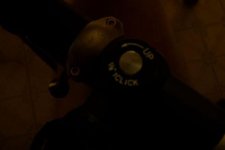I am shooting a custom 6 BR.
My scope is a 1/8" click per inch.
No, your scope is not 1/8 inches per click. In this case, " stands for "Minutes of Angle", or MOA for short.
Rule #1 when shooting mid range (and beyond):
STOP THINKING IN INCHES.
Rule #2 when shooting mid range (and beyond):
STOP THINKING IN CLICKS.
Your scope adjustments are not calibrated in inches, but usually, in some form of angular measurement. Normally, these are MOAs, but could also be mils (any of 5 versions of them).
So, how does one convert from inches to MOA?
- A crude approximation (accurate within 5%) is dividing the change (in inches) between yard lines, then dividing by the range to target (in hundreds of yards). At 600 yards, your 52.67 inch change becomes 8.78 MOA. Multiply this change by 8 (8 clicks per MOA), and you get 70.23 clicks. For better accuracy, divide the drop by 1.047 before dividing by distance (in hundreds of yards). This gives a change requirement of 67.6 clicks - so round up to 68. (No such things as fractional clicks on riflescopes.)
Formula:
Zero change = Drop (in inches)/1.047/distance to target (in 100s of yards)
- Use a ballistic program that converts required changes to MOAs. One of the better ones available (and free) is JBM Ballistics, available at http://www.jbmballistics.com/cgi-bin/jbmtraj_simp-5.1.cgi.
Using JBM's ballistic data for the 95 grain VLD (titled "VLD Litz" - and this is accurately measured data), you get 8.5 MOA of drop. Multiply this by 8, and you get 68 clicks.
If you have an experienced shooter (someone who has shot at distance for more than a year or two) practicing or shooting with you, have them watch the trajectory of your rounds (the "trace" and the "splash") when you shoot. Based on this information, they can give you corrections to get you centered up.
WARNING: While it is possible to "walk" shots onto target using the spotter method, doing this for more than 3 or 4 shots is not advisable, especially if shooting on ranges near populated areas. Why? Ricochets (from "shorts") and misses (from too much elevation) have to land somewhere, and it is hard to predict where this may occur.
Hope this helps.


